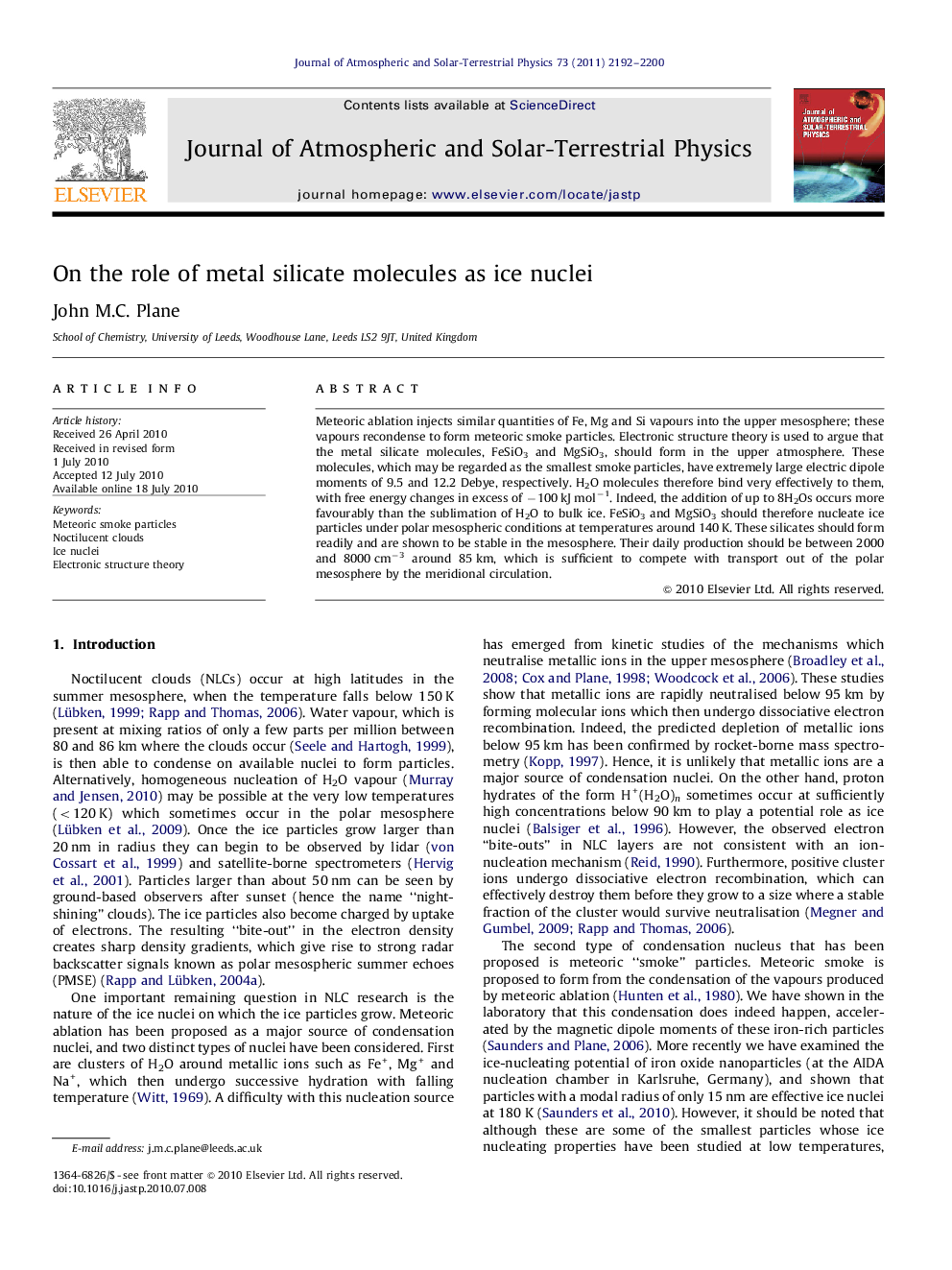| کد مقاله | کد نشریه | سال انتشار | مقاله انگلیسی | نسخه تمام متن |
|---|---|---|---|---|
| 8141112 | 1523657 | 2011 | 9 صفحه PDF | دانلود رایگان |
عنوان انگلیسی مقاله ISI
On the role of metal silicate molecules as ice nuclei
دانلود مقاله + سفارش ترجمه
دانلود مقاله ISI انگلیسی
رایگان برای ایرانیان
کلمات کلیدی
موضوعات مرتبط
مهندسی و علوم پایه
علوم زمین و سیارات
فیزیک زمین (ژئو فیزیک)
پیش نمایش صفحه اول مقاله

چکیده انگلیسی
Meteoric ablation injects similar quantities of Fe, Mg and Si vapours into the upper mesosphere; these vapours recondense to form meteoric smoke particles. Electronic structure theory is used to argue that the metal silicate molecules, FeSiO3 and MgSiO3, should form in the upper atmosphere. These molecules, which may be regarded as the smallest smoke particles, have extremely large electric dipole moments of 9.5 and 12.2 Debye, respectively. H2O molecules therefore bind very effectively to them, with free energy changes in excess of â100Â kJÂ molâ1. Indeed, the addition of up to 8H2Os occurs more favourably than the sublimation of H2O to bulk ice. FeSiO3 and MgSiO3 should therefore nucleate ice particles under polar mesospheric conditions at temperatures around 140Â K. These silicates should form readily and are shown to be stable in the mesosphere. Their daily production should be between 2000 and 8000Â cmâ3 around 85Â km, which is sufficient to compete with transport out of the polar mesosphere by the meridional circulation.
ناشر
Database: Elsevier - ScienceDirect (ساینس دایرکت)
Journal: Journal of Atmospheric and Solar-Terrestrial Physics - Volume 73, Issues 14â15, September 2011, Pages 2192-2200
Journal: Journal of Atmospheric and Solar-Terrestrial Physics - Volume 73, Issues 14â15, September 2011, Pages 2192-2200
نویسندگان
John M.C. Plane,